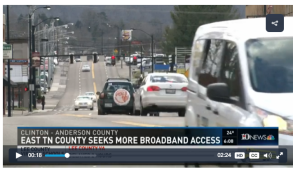All SNG Insights Topics

SNG Announces Broadband Economic Impact Model to Reveal Meaningful Use’s Growth Potential
Leveraging Financial Impacts Data from Tens of Thousands of American Businesses, SNG Can Show Regions the ...

SNG Announces Partnership with Shoals Entrepreneurial Center to Create Jobs and Grow Businesses Through Internet Utilization Programs
US Federal POWER Initiative Funds to be Used to help Businesses and Displaced Coal Workers in Alabama, ...

Leading Practices for Broadband Offices
Why are broadband offices important? They are a focal point for any questions about broadband, a clearinghouse ...

Tennessee Releases SNG Report on Broadband Availability and Utilization
Yesterday the Tennessee Department of Economic and Community Development (TNECD) released a comprehensive ...

SNG Provides ISPs a New Way to Increase Revenues and Retain Customers
Offering Allows ISPs to Help Businesses Better Utilize Their High-Bandwidth Service
Today at the FTTH ...

Governor Cuomo Announces New York State Ranks #1 in the Nation For Broadband Activity and Investment
Strategic Networks Group Surveys Broadband Initiatives in Nationwide Study; Ranks New York State First Overall ...

Stop Blowing It: Taking a Holistic Approach to Broadband Planning
Broadband providers have failed to creatively engage a critical element in the broadband marketplace – the consumer.

Rural Broadband Deficiencies Highlighted in Tennessee
Watch a colorful description of the "slow circle of death" as Tennessee citizens wait for connectivity

What Kind Of Speed Matters for Broadband’s Economic Development Impact?
Over 70% of small businesses (fewer than 50 employees) have less than 4 Mbps upload speed...
